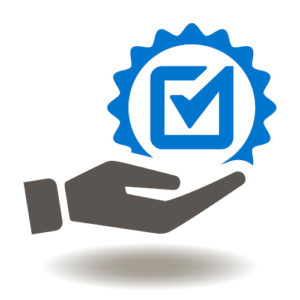Editor’s note: eCampus News is exploring the future and potential of microcredentials in a multi-story series. Check back each week for fresh perspectives from educators and industry experts.
A “one-and-done” degree is no longer enough for many employees and job seekers because, in today’s workplace, in-demand skills are constantly evolving. In fact, current research estimates the half-life of a learned skill at five years, and it’s even shorter for technical skills.
As roles continue to evolve alongside new technologies and processes, the need for upskilling and reskilling programs becomes more urgent –– and stretches across multiple disciplines. That’s where microcredentials come into play.
Microcredentials represent competencies or achievements earned by learners through a series of short, focused courses. With microcredentials, employees can update their skills, organizations can upskill and reskill their workforce, and universities, corporations and associations can expand their offerings and partnerships to meet the growing demands of the current labor market.
Microcredentials are much more than digital badges
Many people mistakenly think of microcredentials as negligible digital badges for adults because they’re often composed of non-credit courses and don’t follow the traditional degree program format. In reality, microcredentials are a more flexible and affordable way for employees to expand their skill sets, and they can help learners demonstrate acquired competencies from well-respected institutions.
Some organizations may be concerned about the quality and legitimacy of microcredential programs. But organizations and employees are increasingly embracing microcredentials for the simple fact that these programs deliver real results.
For example, when IBM launched its digital badge program, it found a correlation between earning digital badges and heightened employee engagement. In particular, 87 percent of IBM badge recipients said they were more engaged because of the digital badge program. With employee disengagement on the rise, microcredentials are becoming even more relevant at IBM and many other organizations.
3 steps for offering microcredentials and reducing the skills gap
Microcredentials facilitate lifelong learning — the solution to solving the skills gap and employee engagement crisis. Now more than ever, employees want learning and development (L&D) opportunities so they can grow in their careers. And L&D also benefits organizations. Companies that excel at internal mobility retain employees for an average of 5.4 years, which is nearly twice as long as companies that struggle with it.
Microcredentials present a significant opportunity for your institution to help organizations. Here are three steps to help you get started.
- Focus on the planning stage
Microcredentials require planning and competency mapping. Start by creating a framework that includes how to measure learners’ competencies beyond time spent clicking through modules. Many learners will enter a microcredential program with prior knowledge, so you need to know how to measure and validate that knowledge. Once you’ve identified the strengths and gaps in learners’ current knowledge, you can bring together new and existing resources to build an engaging micro-learning program.
- Identify and fill skills gaps for organizations
After pre-planning and building a solid foundation, you can work to fill skills gaps for organizations by analyzing the wider labor market and determining up-and-coming skills. This doesn’t mean you need to develop entirely new courses to bridge this gap. Instead, identify the courses you already have that can fill business needs as well as the new courses you need to develop to round out your microcredential program.
- Offer certifications that can be verified
Many organizations hold off on implementing microcredential programs because they don’t know how to determine the validity of the badges their employees will earn. But this is where your institution can provide added value — partnering with universities is a great way for organizations to strengthen the validity of their L&D offerings. With microcredential certifications that contain data about the institution that issued them, how learners achieved them and the evidence that is available to demonstrate their skills, learners can take their certification with them from company to company.
Lifelong learning is future-proofing
Microcredentials are a great way for organizations to future-proof their workforce and for learners to keep their skills updated. By planning and developing microcredentials that fit business needs, organizations are showing their commitment to employee development and ensuring employees are agile enough to handle technology and workplace evolutions, and enable lifelong learning that’s both verified and portable.
- Educause, AWS launch generative AI readiness assessment tool for higher ed - April 23, 2024
- A bungled FAFSA rollout threatens students’ college ambitions - April 19, 2024
- Using real-world tools to prepare students for the workforce - April 18, 2024

